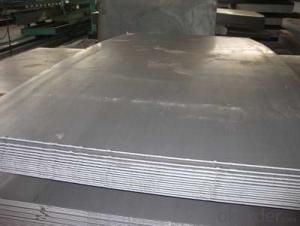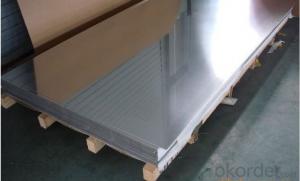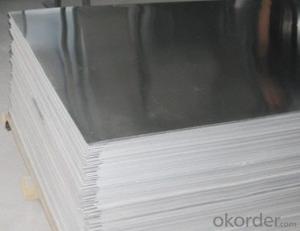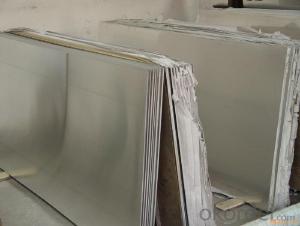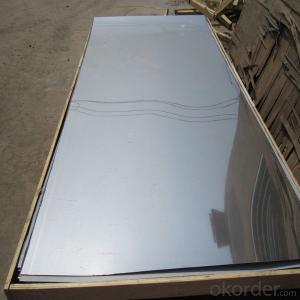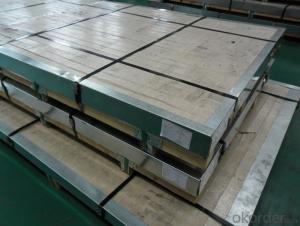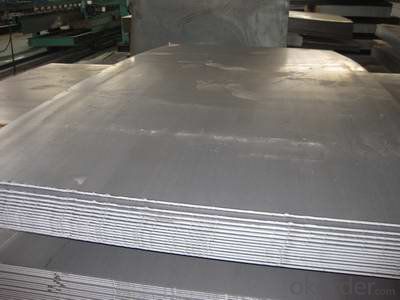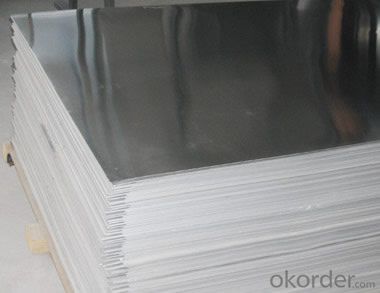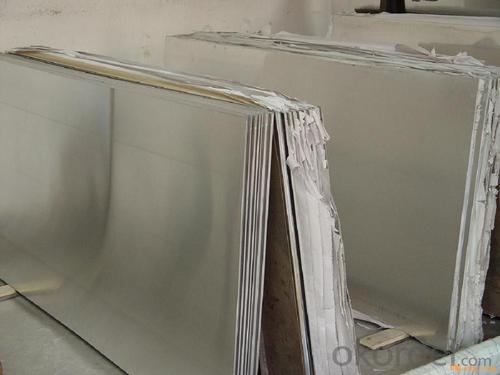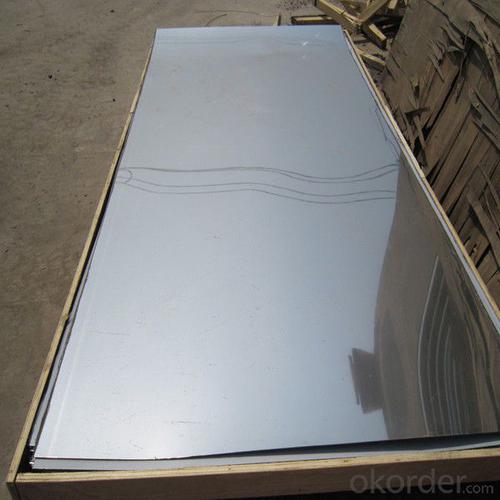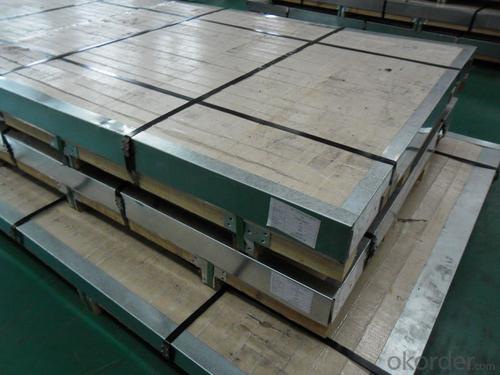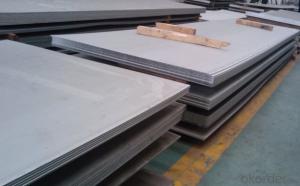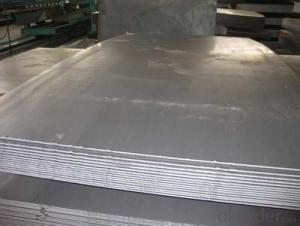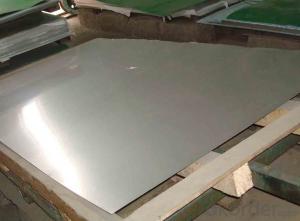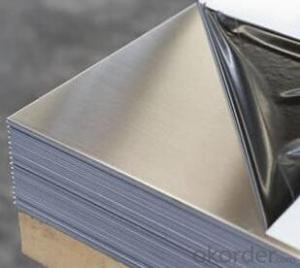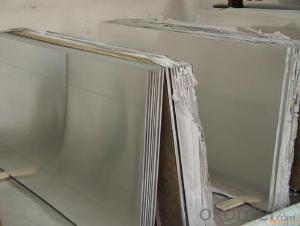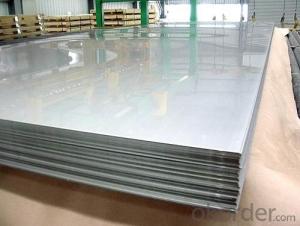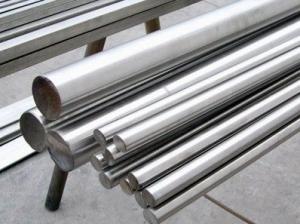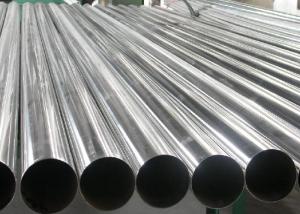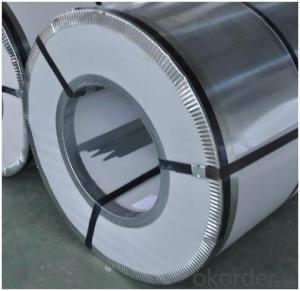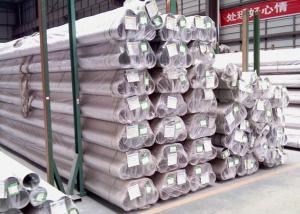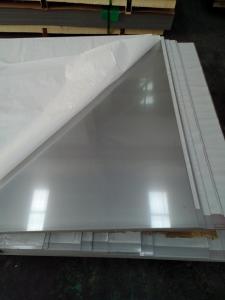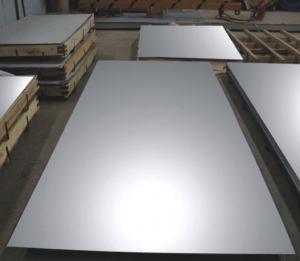Stainless Steel 304 Mettal Sheet with No.4 Surface Treatment
- Loading Port:
- Shanghai
- Payment Terms:
- TT OR LC
- Min Order Qty:
- 500 m.t.
- Supply Capability:
- 5000000 m.t./month
OKorder Service Pledge
OKorder Financial Service
You Might Also Like
Hot sale stainless steel sheet 201/202/304/304l/310S/309S/316L/316Ti/316/321/410/420/430/444/443/409L,and 904L.
Description of Stainless Steel Sheet:
Description | steel sheet,hot rolled steel sheet,cold rolled steel sheet, steel sheet,sheet,steel plate |
Standard | ASME, ASTM, EN ,BS,GB,DIN, JIS etc |
Application | Steel sheet applies to construction field, ships building industry, petroleum & chemical industries, war and electricity industries, food processing and medical industry, boiler heat exchanger, machinery and hardware fields. |
Packaging | Standard export sea-worthy packing |
Delivery time | 10-30 days |
Quality | No.1 |
Productivity | 500 tons/Day |
Note | Our company has cooperative relation between the domestic agents. Stainless steel sheet can be made accordingto the customers requirements. Fasten delivery. Quality assured. |
Contacts | If you have any question,please feel free contact me. |
Stainless steel sheet surface finish characteristics
Surface finish | Characteristics and application |
2B | The surface brightness and flatness of no2B is better than no2D. then through a special surface treatment to improve its mechanical properties,No2B could nearly satisfy comprehensive uses. |
No.1 | Polished with abrasive belt of grit#100-#200, have better brightness with discontinuous coarse stria, used as inner and external ornaments for building, electrical appliances and kitchen utensils etc. |
No.4 | Polished with abrasive belt of grit #150-#180,have better brightness with discontinuous coarse stria, but thinner than No3, are used as bathtub buildings inner and external ornaments electrical appliances kitchen utensils and food processing equipment etc. |
HL | Polished with abrasive belt of grit #150-#320 on the NO.4 finish and has continuous streaks, mainly used as buildings ornaments elevators, door of building, frontal plate etc. |
BA | Cold rolled, bright annealed and skin-passed, the product have excellent brightness and good reflexivity like mirror, kitchen apparatus, ornament etc. |
8K | The product have excellent brightness and prefer reflexivity can to be the mirror. |
Main Features of stainless steel sheet :
•Escalator, Elevator, Doors
•Furniture
•Production tools, Kitchen appliances, freezers, cold rooms
•Auto Parts
•Machinery and Packaging
•Equipment and Medical devices
•Transport system
Product Details:
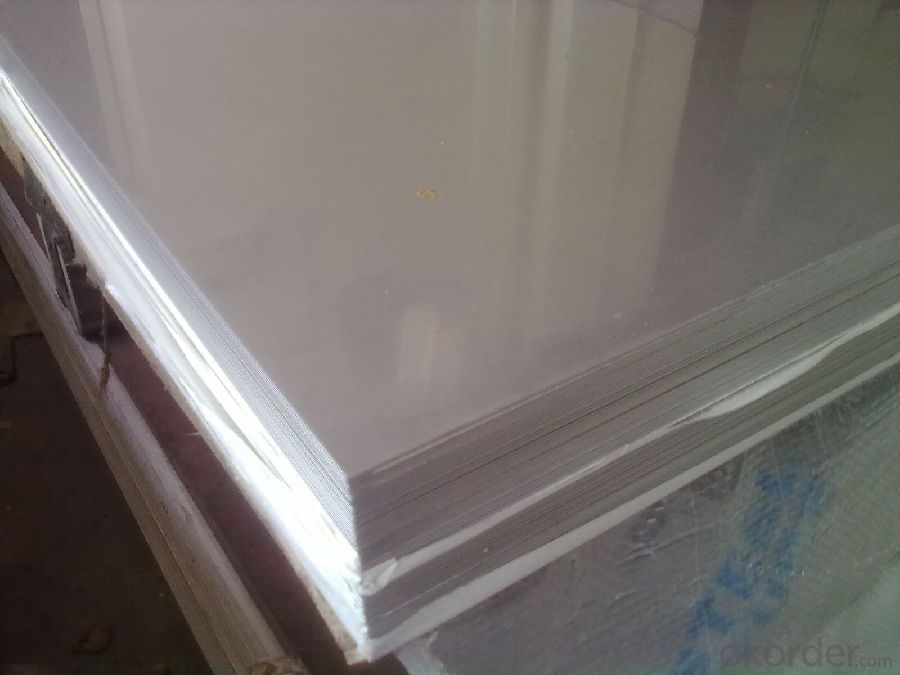
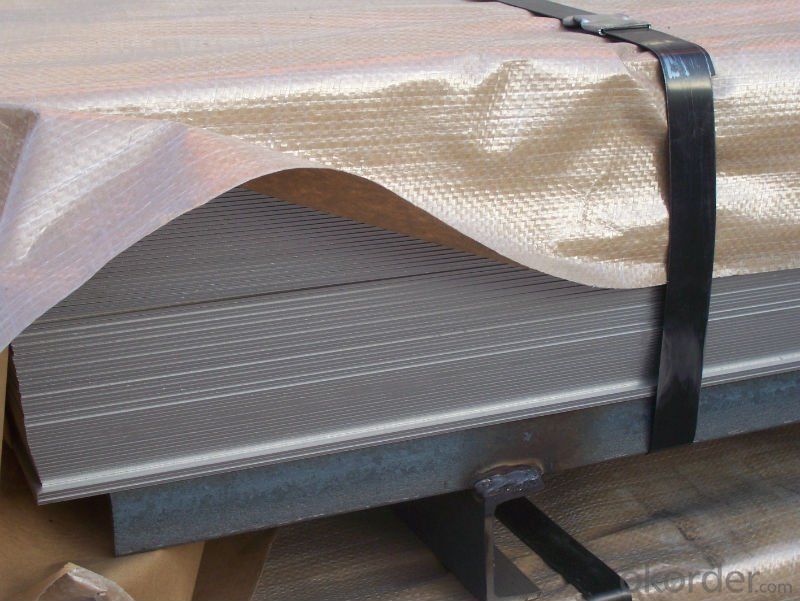
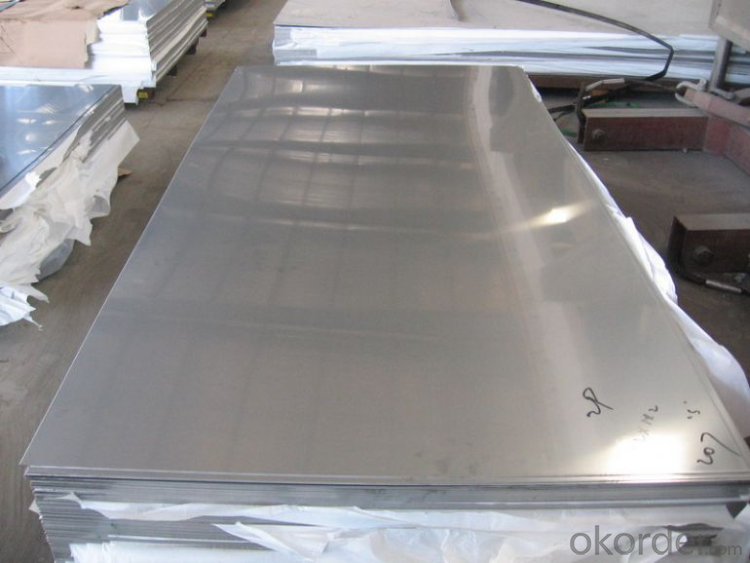
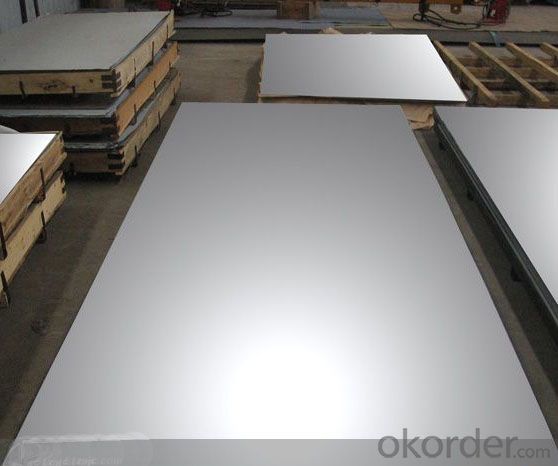
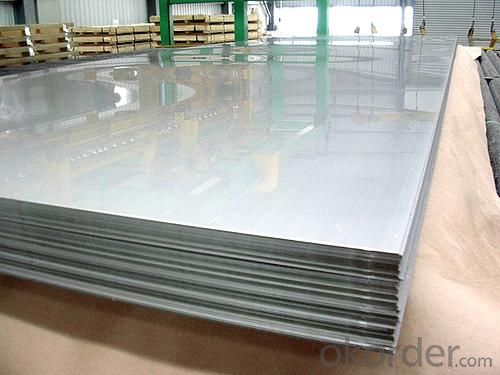
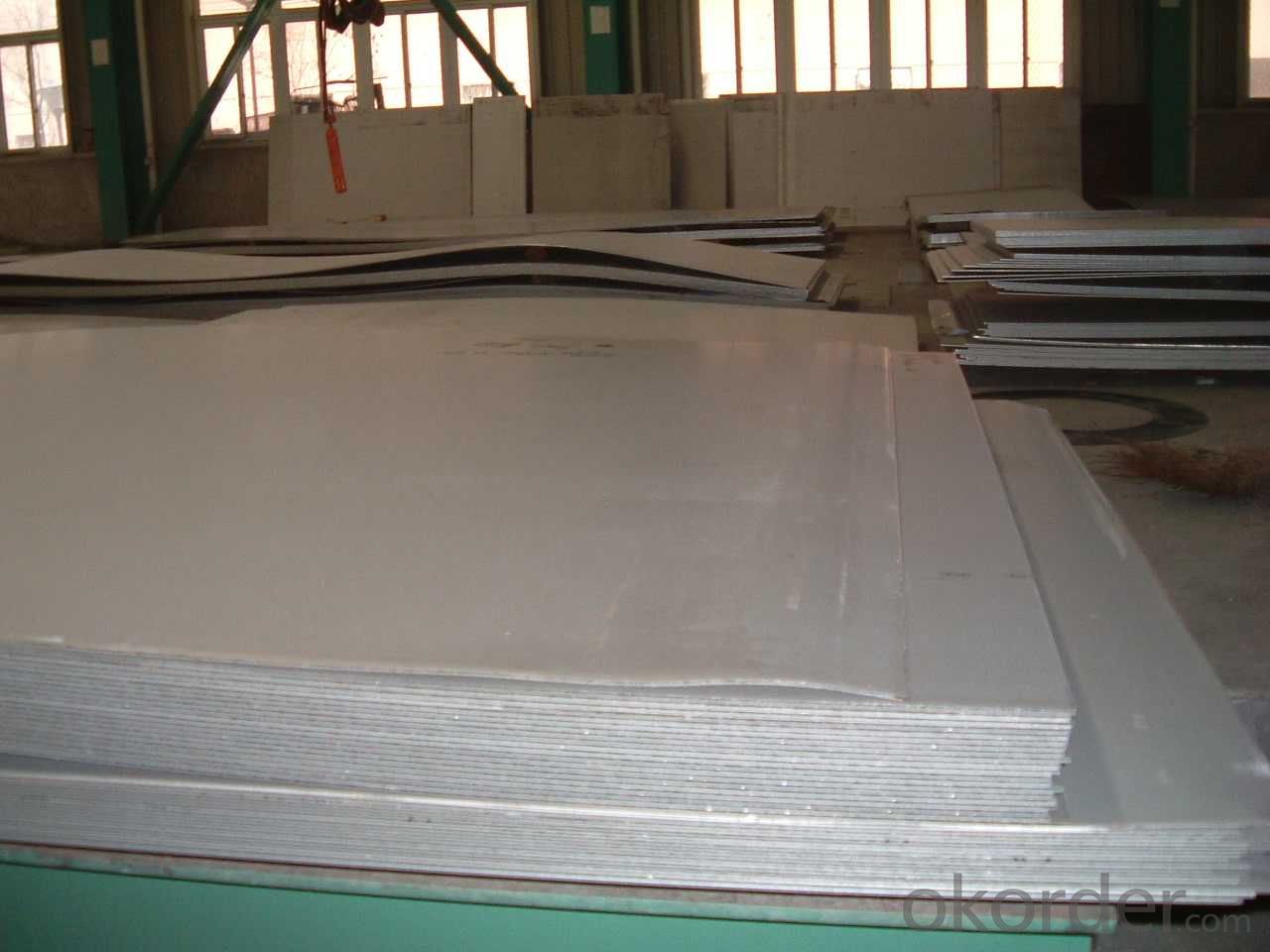
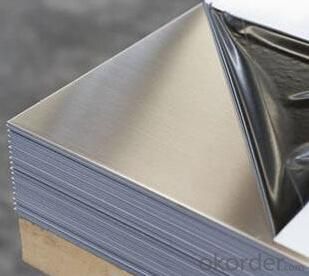
Cold Rolled and Hot Rolled:
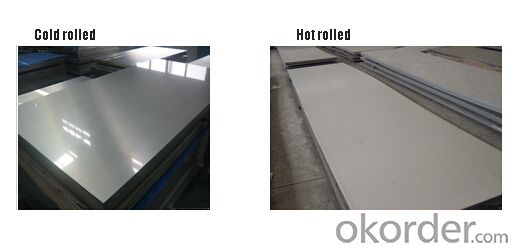
Packing and Loading:
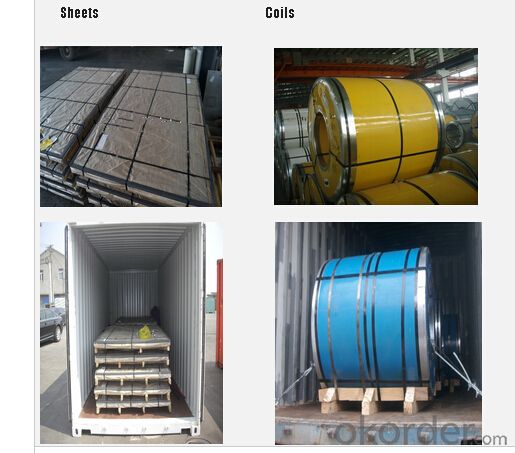
FAQ:
1. What's the quality?
Very fine, we have been exported to more than 30 countries.
2. How long get reply?
Usually within 24 hours
If you have any question about stainless steel sheets, do not forget to send the email to us! You will get the competitive Price and have a very good experience about the Buying Process! CNBM International Corporation is always your trustful friend!
- Q: How do you calculate the cost of a stainless steel sheet?
- To calculate the cost of a stainless steel sheet, there are a few factors that need to be considered. 1. Determine the dimensions: The first step is to know the length, width, and thickness of the stainless steel sheet. These measurements will determine the amount of material needed, which is a significant factor in calculating the cost. 2. Determine the grade: Stainless steel sheets come in various grades, such as 304, 316, or 430. Each grade has different properties and costs associated with it. The grade required for a specific application will influence the price of the sheet. 3. Determine the finish: Stainless steel sheets can have different finishes, including brushed, polished, or patterned. The finish required will impact the cost as each finish requires different processes and materials. 4. Consider quantity: The quantity of stainless steel sheets needed can also affect the cost. Bulk orders often come at a discounted price, whereas smaller quantities may be subject to higher prices. 5. Research suppliers: It is crucial to research different suppliers and compare prices. Prices can vary depending on the supplier's location, reputation, and market conditions. 6. Additional costs: Some additional costs may be involved, such as transportation, handling, or cutting fees. It is important to inquire about these costs when obtaining quotes from suppliers. By considering these factors and doing thorough research, one can accurately calculate the cost of a stainless steel sheet.
- Q: What are the common applications for stainless steel sheets?
- Due to their exceptional properties and durability, stainless steel sheets find a wide range of applications. They are utilized in various industries for different purposes. Some of the common uses include: 1. Architectural purposes: Stainless steel sheets are commonly employed in architectural projects like cladding, roofing, and wall panels. They not only provide a sleek and modern appearance to buildings but also offer corrosion resistance and easy maintenance. 2. Kitchenware manufacturing: Stainless steel sheets are widely used in the production of kitchen appliances, sinks, countertops, and cookware. Their resistance to stains, heat, and corrosion makes them ideal for use in kitchens. 3. Automotive industry: Stainless steel sheets are extensively utilized in the automotive sector for manufacturing exhaust systems, body parts, and trim. They provide strength, corrosion resistance, and an attractive finish, making them suitable for both functional and aesthetic purposes. 4. Medical equipment production: Stainless steel sheets are commonly employed in the manufacturing of medical equipment and instruments. This is due to their hygienic properties, resistance to corrosion, and staining. They are used in surgical instruments, dental tools, hospital equipment, and implants. 5. Chemical and petrochemical industries: The chemical and petrochemical industries extensively use stainless steel sheets due to their resistance to high temperatures, chemicals, and corrosion. They are employed in storage tanks, pipelines, heat exchangers, and other equipment that comes into contact with corrosive substances. 6. Food processing industry: Stainless steel sheets are highly sought after in the food processing industry because of their hygienic properties and resistance to corrosion. They are used to create food preparation surfaces, storage containers, and machinery that must meet strict sanitary standards. 7. Construction projects: Stainless steel sheets are used in construction projects such as bridges, tunnels, and railway tracks due to their strength, durability, and resistance to corrosion. They are also utilized in the construction of industrial buildings, warehouses, and infrastructure. 8. Aerospace industry: Stainless steel sheets find applications in the aerospace industry for various components, including aircraft frames, engine parts, and interior fittings. They offer an excellent strength-to-weight ratio, corrosion resistance, and heat resistance, making them suitable for demanding aerospace applications. In conclusion, stainless steel sheets are a versatile and widely used material in various industries due to their exceptional properties. They are indispensable for many applications.
- Q: What are the standard sizes of stainless steel sheets?
- The standard sizes of stainless steel sheets can vary depending on the specific requirements and applications. However, common standard sizes for stainless steel sheets include 4 feet by 8 feet, 4 feet by 10 feet, and 5 feet by 10 feet. Other sizes may also be available based on customer needs and supplier capabilities.
- Q: What is the specific heat capacity of stainless steel sheets?
- The specific heat capacity of stainless steel sheets may differ based on the specific grade and composition of the stainless steel. Nevertheless, the average specific heat capacity of stainless steel is approximately 500 J/kg°C. Hence, to increase the temperature of one kilogram of stainless steel by 1 degree Celsius, it would necessitate 500 joules of energy. It is crucial to acknowledge that this measurement may not be universally applicable to all varieties of stainless steel. Therefore, it is advisable to seek guidance from specific technical data or reference materials for precise and reliable values.
- Q: What type of stainless steel plate made by imported vibrating disk?
- Compared with similar products, the vibration disc produced by our factory is of high precision, low noise, long life and easy operation. It solves the problem of automatic sorting and feeding.
- Q: How are stainless steel sheets produced?
- The production of stainless steel sheets involves a series of manufacturing processes that encompass different stages. To begin with, raw materials like iron ore, coal, and limestone are melted in a blast furnace, which is known as primary steelmaking and results in the creation of molten iron. Next, the molten iron is moved to a basic oxygen furnace (BOF) or electric arc furnace (EAF) where it is combined with scrap steel and other alloys to adjust its chemical composition as desired. The molten mixture then undergoes a refining process to eliminate impurities and attain the desired quality of stainless steel. Once the refining process is finished, the molten stainless steel is cast into large blocks called slabs or billets. These solidified metal blocks are then heated and passed through a series of rollers in a process called hot rolling, which reduces their thickness and shapes them into the desired dimensions. After hot rolling, the stainless steel sheets go through annealing, a process where they are heated to a specific temperature and allowed to cool gradually. Annealing serves to relieve internal stresses and enhance the material's mechanical properties, such as strength and ductility. Following annealing, the stainless steel sheets may undergo further processing such as cold rolling. This process involves passing the sheets through rollers at room temperature to achieve the desired thickness and surface finish. Cold rolling also improves the stainless steel's mechanical properties and enhances its surface quality. Once the sheets have been cold rolled, they are usually coated with a protective film or passivation layer to prevent corrosion. This film acts as a barrier against environmental factors and helps maintain the longevity of the stainless steel sheets. Finally, the stainless steel sheets are cut into the desired sizes and shapes using various cutting techniques like shearing or laser cutting. Additionally, the sheets may undergo additional surface treatments such as polishing or brushing to achieve the desired aesthetic appearance. In conclusion, the production of stainless steel sheets involves melting raw materials, refining the molten metal, casting it into slabs, hot rolling to reduce thickness, annealing to improve properties, cold rolling for further refinement, coating for corrosion resistance, and finally cutting and surface treatment to achieve the desired product.
- Q: How do you remove scratches from mirror-finish stainless steel sheets?
- To remove scratches from mirror-finish stainless steel sheets, you can follow these steps: 1. Clean the surface of the stainless steel sheet with a mild detergent and warm water, then dry it thoroughly. 2. Identify the direction of the grain on the stainless steel sheet. The grain usually runs in one direction and appears as faint lines. 3. Using a non-abrasive stainless steel cleaner or a mixture of baking soda and water, gently rub the scratched area along the grain with a soft cloth or sponge. 4. Continue rubbing in a consistent motion until the scratches start to fade. Avoid applying excessive pressure to prevent further damage. 5. Rinse the surface with clean water and wipe it dry with a soft cloth. 6. If the scratches are still visible, you can try using a stainless steel scratch remover or a metal polish specifically designed for stainless steel. Follow the product instructions and apply it to the scratched area following the grain. 7. Once the scratches are no longer visible, clean the surface again with mild detergent and water, then dry it thoroughly to restore the mirror-finish appearance.
- Q: Are stainless steel sheets resistant to acids?
- Yes, stainless steel sheets are generally resistant to acids due to their high levels of chromium and nickel, which form a protective oxide layer on the surface, preventing corrosion and making them suitable for various acid-related applications.
- Q: What welding equipment do we need for welding stainless steel sheet and stainless steel square tube?
- 1 argon arc welding machine! If the person who has not been married, as little as possible, that thing has radiation, long time use of physiology is influential. You know what you do.2, regardless of the front and back can be, as long as it looks beautiful and practical.3, welding technology is good, it will not be ugly after welding.4, only the use of technology to make up for the lack of machinery, and then cattle B hardware, there is no good software is not good.5, welding rod, protective mask and so on.
- Q: Can stainless steel sheets be used for medical instruments?
- Yes, stainless steel sheets can be used for medical instruments. Stainless steel is a common material choice in the medical industry due to its excellent corrosion resistance, durability, and ease of sterilization. It is widely used in various medical instruments such as surgical tools, implants, and equipment due to its hygienic properties and ability to withstand harsh cleaning and sterilization processes.
Send your message to us
Stainless Steel 304 Mettal Sheet with No.4 Surface Treatment
- Loading Port:
- Shanghai
- Payment Terms:
- TT OR LC
- Min Order Qty:
- 500 m.t.
- Supply Capability:
- 5000000 m.t./month
OKorder Service Pledge
OKorder Financial Service
Similar products
Hot products
Hot Searches
Related keywords
